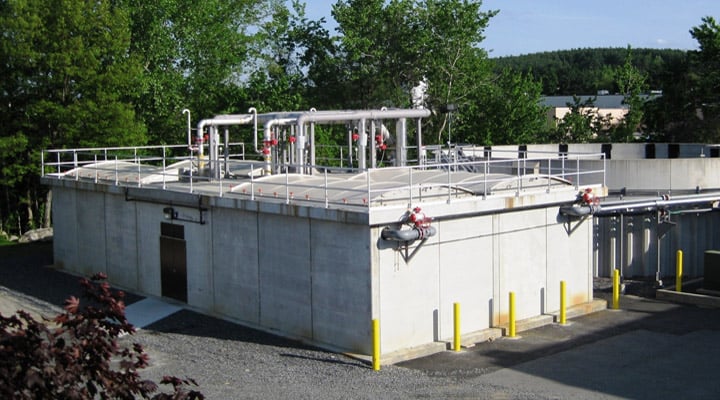ADI® Anaerobic Membrane Bioreactor (AnMBR)
See All Anaerobic SystemsThe latest innovation in biological wastewater treatment.
- is the minimum order quantity for this product. Please check quantity and add to cart again.
- Minimize sludge handling and disposal costs
- Save on energy costs
- Eliminate wastewater surcharges
- Reduce or eliminate chemical usage
- Consistent, high quality effluent
- Long lifetime

The latest innovation in biological wastewater treatment.
- Minimize sludge handling and disposal costs
- Save on energy costs
- Eliminate wastewater surcharges
- Reduce or eliminate chemical usage
- Consistent, high quality effluent
- Long lifetime
Description
The latest innovation in biological wastewater treatment.
The state-of-the-art ADI® AnMBR system combines anaerobic digestion with physical separation membranes, resulting in maximum organic load removal and biogas production. The technology produces a superior effluent quality compared to any anaerobic technology on the market.
Years of proven full-scale experience have demonstrated that the AnMBR is ideally suited for treating wastewater streams or slurries with very high concentrations of organics, solids, and fat, oil, and grease (FOG). The membrane barriers ensure complete solids retention, efficient system operation, and process stability at all times—even under peak hydraulic and organic loading conditions. Since gravity settling is not required, higher organic loadings and mixing intensities can be employed than with other anaerobic technologies.
To increase loading capacity and improve performance and effluent quality, existing anaerobic systems can easily be upgraded to an AnMBR. The system can also be paired with an ADI® aerobic membrane bioreactor (MBR) to provide complete treatment and meet even the strictest discharge requirements.
- Consistent, high-quality effluent (very low BOD and free of TSS)
- Continuously meet discharge requirements
- Small footprint
- Convert organic waste to recoverable green energy (heat and power)
Features
Costing Savings
- Minimize sludge handling and disposal costs
- Save on energy costs
- Significantly less energy-intensive than aerobic systems
- Biogas can be utilized to reduce fossil fuel consumption
- Minimize aerobic polishing requirements
- Eliminate primary treatment and wastewater surcharges
- Reduce or eliminate chemical usage
Environmental Benefits
- Consistent, high quality effluent
- Very low BOD
- Free of TSS
- Continuously meet discharge requirements
- Small footprint
- Convert organic waste to recoverable green energy (heat and power)
- Waste sludge suitable for land application
- Improve local and global water security
Process Advantages
- Membrane barrier ensures complete solids retention and process stability
- Large biomass inventory ensures efficient treatment at all times
- Minimal pre-treatment and post-treatment (aerobic polishing) requirements
- Eliminates issues with gravity clarification
- Handles high organic loadings and mixing intensities
- Can digest high amounts of solids and FOG
Simplified Operation & Maintenance
- Minimal operator attention
- Reduced sludge handling
- Superior membrane durability and performance with low maintenance:
- Long lifetime
- Simple, infrequent cleaning procedure
- Membranes are cleaned in place
Specs
- High Rate
